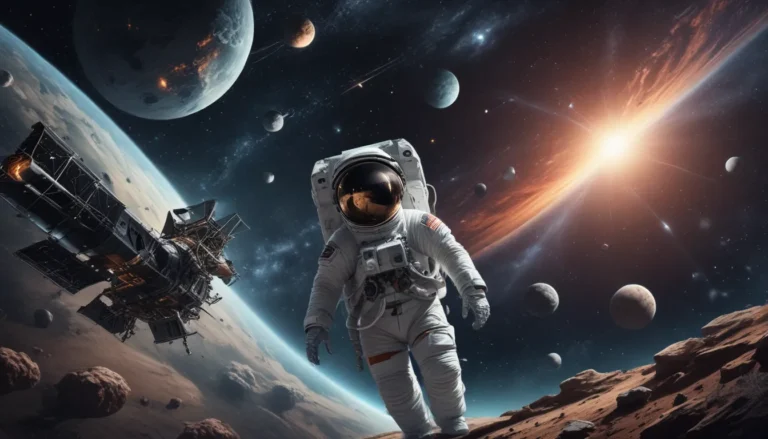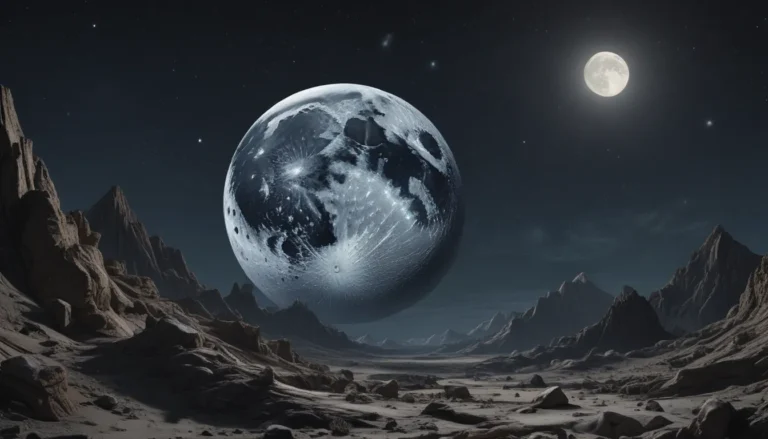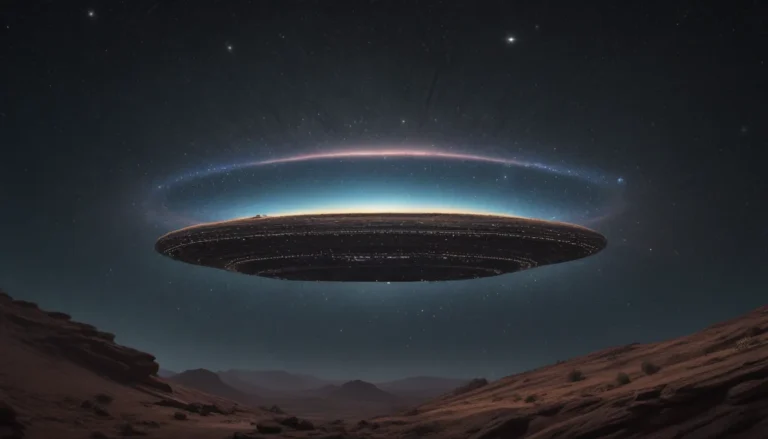The pictures we use in our articles might not show exactly what the words say. We choose these pictures to make you interested in reading more. The pictures work together with the words but don’t take their place. The words still tell you the important facts.
Space travel has always been a subject that captures the imagination of humankind. The thought of exploring the vast expanse beyond our planet is both thrilling and awe-inspiring. With incredible technological advancements over the years, space travel has become a reality, allowing astronauts to venture beyond Earth's atmosphere and push the boundaries of human exploration. In this article, we will delve into the fascinating world of space travel and unravel 12 astounding facts that will leave you in awe of the cosmos. From mind-boggling distances covered to mind-bending effects of zero gravity, these facts will provide you with a glimpse into the incredible journey of astronauts and the wonders of the universe. So, fasten your seatbelts and join us on this extraordinary adventure through the cosmos.
Unveiling the Marvels of Space Travel:
- **Space travel can cause astronauts to grow taller and experience 16 sunrises and sunsets in a day, showcasing the remarkable effects of zero gravity and orbiting the Earth.
- **Astronauts may perceive less time passing than people on Earth due to time dilation, and the prospect of space tourism is becoming a reality with private companies like SpaceX and Blue Origin leading the way.
The Pioneering Human Journey Beyond Earth:
Yuri Gagarin, a Soviet cosmonaut, etched his name in history as the first human to travel into space on April 12, 1961. His spacecraft, Vostok 1, completed one orbit around the Earth in just under two hours, marking a significant milestone in space exploration.
Thrilling Speeds of Spacecraft:
Spacecraft can achieve extraordinary velocities. The fastest spacecraft on record is the Helios 2, which reached a mind-boggling speed of approximately 157,078 miles per hour (252,792 kilometers per hour) as it approached the sun.
A Day in the Life of an Astronaut:
While a day on Earth lasts 24 hours, a day in space is slightly different. Astronauts aboard the International Space Station (ISS) witness 16 sunrises and sunsets daily as the ISS orbits the Earth approximately once every 90 minutes.
The Impact of Gravity on Astronauts:
The absence of gravity in space leads to significant changes in astronauts' bodies. They can grow up to two inches taller as their spinal disks expand, while their muscles and bones weaken due to lack of use.
The Immensity of the International Space Station:
The International Space Station (ISS) is an awe-inspiring structure, approximately the size of a football field when its solar panels are fully extended. It serves as a vital research laboratory for scientific experiments and a hub for international collaboration.
Embracing Weightlessness in Space:
Astronauts experience weightlessness in space due to the microgravity environment. Objects and individuals in orbit around the Earth appear to float due to the weaker gravitational force compared to the planet's surface.
Journeying Far Beyond Earth:
The furthest journey from Earth by humans was undertaken by the crew of the Apollo 13 mission in 1970. They reached a distance of approximately 248,655 miles (400,171 kilometers) from Earth, circumnavigating the Moon during a critical mission that tested human ingenuity and courage.
Breaking Barriers with Valentina Tereshkova:
Valentina Tereshkova, a Soviet cosmonaut, made history on June 16, 1963, by becoming the first woman to travel into space. She orbited the Earth 48 times during her mission aboard Vostok 6.
Navigating the Hazards of Space Radiation:
Space radiation poses a significant threat to astronauts. Exposure to high levels of radiation can increase the risk of cancer, damage the central nervous system, and pose long-term health concerns. Protective measures such as shielding and monitoring are crucial to mitigate these risks.
The Lengthy Expedition to Mars:
A journey from Earth to Mars can span from six to nine months, depending on the alignment of the planets. This vast distance presents numerous challenges for future manned missions, including fuel requirements, crew well-being, and the need for sustainable life-support systems.
Time Dilation in Space Travel:
Einstein's theory of relativity has an intriguing implication for space travel. As a spacecraft approaches the speed of light, time slows down relative to an observer on Earth. This phenomenon, known as time dilation, means that astronauts may experience less time passing than people on Earth.
Embracing the Future of Space Tourism:
Advancements in technology and growing interest in space exploration have paved the way for the future of space tourism. Private companies like SpaceX and Blue Origin are aiming to offer commercial trips to space, giving individuals the chance to witness the wonders of space firsthand.
In conclusion, space travel stands as a remarkable feat of human ingenuity, pushing the boundaries of our understanding and exploration of the universe. The 12 astounding facts about space travel spotlight the incredible achievements and challenges faced by astronauts as they journey beyond our planet's atmosphere.
Celebrating the Marvels of Space Travel:
Space travel remains an extraordinary and captivating field that continues to inspire our imaginations. The facts presented here shed light on the awe-inspiring aspects of this incredible voyage beyond our planet. From the staggering distances covered to the astonishing speeds achieved, space travel pushes the boundaries of human knowledge and exploration.
As we delve deeper into the vastness of the universe, the opportunities for space travel and exploration only continue to expand. While undoubtedly a challenging endeavor, each mission brings valuable insights and sets the stage for future generations to venture further into the cosmos.
Space travel encapsulates the essence of human curiosity, resilience, and determination to comprehend our place in the universe. It provides us with a glimpse into the marvels and enigmas that lie beyond our home planet. Let us revel in the wonders of space travel and maintain our eagerness for the discoveries and adventures awaiting us in the vast expanse of the universe.
FAQs
Q: How fast do spacecraft travel in space?
A: Spacecraft can reach incredible speeds, with velocities of up to 17,500 miles per hour (28,000 kilometers per hour). This speed enables them to overcome Earth's gravity and explore the depths of space.
Q: How do astronauts maintain their health during long-duration space missions?
A: Astronauts undergo intensive physical training before their missions and adhere to specialized exercise routines to counteract muscle and bone loss in microgravity. They also follow carefully planned diets and strict medical protocols to uphold their health and well-being.
Q: How long does it take to reach the Moon?
A: It takes approximately three days for a spacecraft to reach the Moon. The exact duration can vary based on the trajectory and propulsion system employed.
Q: Can humans survive on other planets?
A: Currently, humans can only survive on Earth without specialized equipment. Nonetheless, scientists are actively exploring the possibility of establishing colonies on other planets, such as Mars, by developing technologies to create habitable environments.
Q: Can space travel impact the human body?
A: Space travel can have diverse effects on the human body, including muscle and bone loss, cardiovascular changes, and vision issues. Long-duration missions also present psychological challenges to astronauts due to isolation and confinement. Ongoing research aims to mitigate these effects and ensure astronaut well-being during space travel.
Embarking on a journey of space travel opens up a realm of possibilities and discoveries that continue to intrigue and inspire. As we gaze towards the stars and explore the wonders of the universe, let us embrace the challenges and marvel at the astounding feats of human achievement in the boundless expanse of space.






